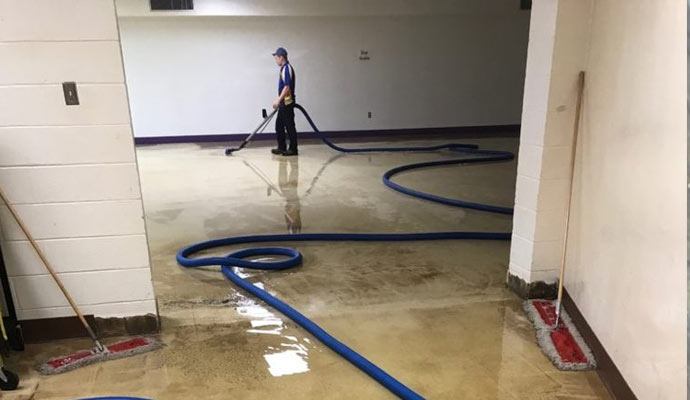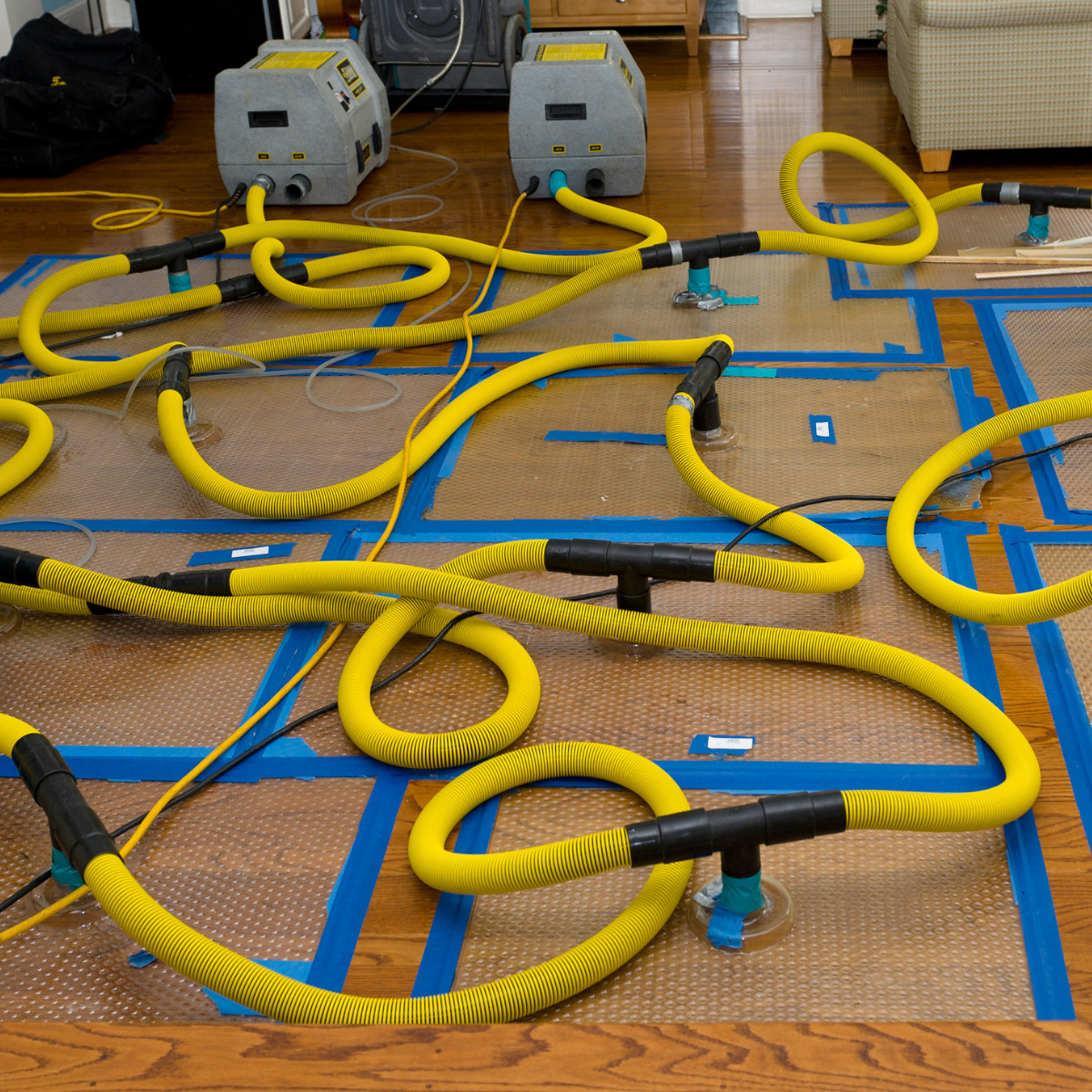The value of certifications in choosing Water Damage Restoration services
Water Damage Restoration 101: Comprehending the Process and Expense
Water damage can strike all of a sudden, leaving house owners in a state of complication. Recognizing the reconstruction process is important for efficient healing. From examining the damage to choosing the ideal provider, each step affects the general result and expense. Aspects such as the kind of water damage and seriousness also play a significant duty. What are the details strategies made use of in repair, and exactly how can one get ready for prospective costs?
Types of Water Damage
Water damage can arise from various resources, each presenting unique difficulties for restoration. The 3 key kinds of water damage are categorized based upon contamination levels: tidy water, grey water, and black water. Clean water originates from sources like broken pipelines or rain, presenting very little health and wellness risks. Gray water, that includes wastewater from sinks or cleaning makers, contains contaminants that might trigger discomfort or illness if ingested. Black water, one of the most dangerous category, comes from sewage or floodwaters, containing harmful microorganisms and virus. Each type requires particular restoration strategies and security actions to successfully alleviate and address the damage wellness dangers. Recognizing these distinctions is important for professionals and house owners involved in the water damage repair process.
Preliminary Assessment and Examination
A detailed initial evaluation and assessment are vital steps in the water damage remediation procedure. This stage starts with a professional assessing the degree of the damage, recognizing the resource of the water breach, and determining the sort of water involved - Water Damage Restoration. Service technicians make use of customized tools to gauge moisture levels in various materials, such as walls, floors, and furniture. In addition, they analyze architectural honesty and possible carcinogen, consisting of mold development. The searchings for from this assessment educate the restoration strategy, leading essential activities and source appropriation. Exact paperwork of the damage is necessary for insurance policy cases and future reference. Overall, this initial analysis lays the foundation for efficient restoration, ensuring a thorough response to the specific scenario available

Water Extraction Methods
Complying with the first analysis, reliable water removal techniques are used to reduce damage and prevent more problems. These techniques entail using specialized tools such as industrial-grade vacuum cleaners and submersible pumps. The choice of approach depends upon the volume of water existing and the type of products impacted. For standing water, completely submersible pumps are normally used for rapid elimination, while vacuum cleaners are optimal for extracting water from rugs and upholstery. Furthermore, progressed methods like water extraction mats may be used for hard-to-reach locations. The goal is to remove as much water as possible, lessening the capacity for mold growth and structural damage. Motivate and efficient water extraction is important in the general water damage reconstruction procedure.
Drying and Dehumidification Process
When the water removal is full, the drying out and dehumidification process comes to be crucial to recovering the affected area. This stage commonly uses industrial-grade dehumidifiers and air movers to successfully reduce moisture degrees. The dehumidifiers attract moist air, eliminating excess moisture, while air moving companies circulate air to speed up dissipation. Surveillance tools is frequently used to track humidity and temperature levels, making sure ideal drying conditions. The duration of this process can vary depending upon the level of the water damage and environmental elements. It is important to extensively completely dry all affected materials, including walls, flooring, and furnishings, to avoid mold growth and structural damage. Proper execution of this step is critical for a successful restoration outcome.
Cleaning and Sanitizing Affected Locations

Initial Analysis and Inspection
Prior to beginning any type of restoration initiatives, a complete preliminary analysis and assessment of the affected locations are crucial for effective cleaning and sanitizing. This process entails identifying the degree of water damage, figuring out the resource of the water intrusion, and examining the products impacted. Examiners generally seek indications of mold and mildew development, architectural stability issues, and damaged valuables. The evaluation additionally includes inspecting wetness degrees utilizing specific equipment to assure no concealed water pockets stay, as these can cause more difficulties. Recording the findings is crucial for preparing the following action in the reconstruction process. An in-depth initial evaluation allows repair specialists to design a targeted approach for effective cleaning and sanitizing, eventually lessening damage and wellness risks.
Cleaning Techniques and Products
Reliable cleaning and sanitizing of water-damaged areas call for a variety of methods and items tailored to the details materials impacted. For porous surface areas like drywall and carpets, removal techniques are important to get rid of excess dampness, adhered to by deep cleansing with specialized detergents. Non-porous materials such as floor tile or steel can be cleansed making use of commercial-grade cleansers that successfully get rid of contaminants. Steam cleaning is one more effective strategy, particularly for rugs and upholstery, as it utilizes heats to remove germs and mold. In addition, environmentally friendly items are significantly preferred for their safety and security and efficiency. Inevitably, picking the ideal cleansing approaches and items not just assures prompt cleanliness but also help in protecting against additional damage and carcinogen connected with water intrusion.
Sanitization and Disinfection Techniques
When dealing with water damage, correct sanitization and disinfection approaches are vital to ensure the safety and security and health and wellness of the damaged atmosphere. After first cleaning, surface areas should be treated with ideal disinfectants to remove pathogens, mold and mildew, and germs look at more info that grow in moist problems. Usual techniques include making use of EPA-approved chemical anti-bacterials, which can be applied through spraying or wiping strategies. In addition, ultraviolet (UV) light systems can efficiently disinfect areas by neutralizing microorganisms without severe chemicals. The choice of method typically depends on the type of materials influenced and the extent of contamination. Eventually, comprehensive sanitization not just recovers a safe space however additionally assists prevent future health dangers connected with lingering moisture and mold and mildew growth.

Repair Services and Restoration Options

Aspects Influencing Restoration Costs
The level of water damage straight impacts the repair sets you back house owners can expect to incur. Variables such as the resource of the water, the duration of exposure, and the afflicted materials significantly affect rates. For example, clean water damage from a damaged pipeline is typically less pricey to bring back compared to damage brought on by sewage. In addition, the level of contamination dictates the requirement for specialized cleansing and disposal solutions, further enhancing costs. Geographical area additionally contributes, as regional labor rates and schedule of remediation solutions can differ. Finally, the urgency of the reaction impacts expenses; quicker interventions normally cause decrease total expenditures by protecting against more damage. Recognizing these variables is essential for home owners when approximating repair expenses
The three key kinds of water damage are classified based on contamination degrees: clean water, gray water, and black water. A detailed initial evaluation and examination are vital actions in the water damage repair process. For standing water, submersible pumps are usually made use of for quick removal, while vacuums are perfect for extracting water from carpets and upholstery. The degree of water damage directly influences the repair costs home owners can expect to incur. Tidy water damage from a broken pipeline is typically much less expensive to restore contrasted to damage triggered by sewage.